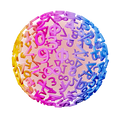What Is Relative Frequency and Cumulative Frequency?
You use relative frequencies in a frequency table. The relative frequency of an item is the frequency of that item coming up, divided by the sum total of the observations. It can be expressed as a fraction, a decimal number, or a percentage.
Example 1
You toss a coin 5, 10, 50 and finally 100 times. You record how many heads you get for each set of tosses, and write the information in the frequency table below.
Frequency Tables and Percentages
Here is an example of relative frequencies expressed as percentages in a frequency table:
Example 2
A Swiss chocolate factory is testing out a new flavor of chocolate. They gave a taste sample to 16 people and asked them to grade the flavor from 1 to 6, with 1 being the worst and 6 being the best. These are the results:
The frequency table is as follows:
Video Crash Courses
Want to watch animated videos and solve interactive exercises about cumulative frequency table?
Click here to try Video Crash Courses called “Data Collection, Frequency and Frequency Tables”!
Cumulative Frequency
Cumulative basically means “piled up.” In statistics, “cumulative” means adding together all observations up to a limit you’ve been given.
The cumulative frequency, then, tells you how many observations you have from the beginning of your table of frequencies, up to the current value. In short, the cumulative frequency tells you how many observations there are of the given value and below.
Cumulative relative frequency (CRF) or relative cumulative frequency (RCF) describe two different methods of finding the same answer. CRF wants you to sum up the relative frequencies up to the limit that’s been set, while RCF wants you to find the relative frequency of the cumulative frequency.
Whether you call it CRF or RCF, insert the cumulative frequency you’ve found for and the total number of observations into this formula:
Formula
Relative Cumulative Frequency
When the cumulative frequency is and the total number of observations is , you get
Example 3
From the frequency table above, you can see that eight tasters gave the chocolate a rating of 3 or worse. That means the cumulative frequency for the observational value 3 (the number of test subjects that gave taste grade 1, 2 or 3) is equal to 8. Then you can calculate the cumulative relative frequency of the taste rating of 3:
The share of test subjects that gave the taste a rating of 3 or worse is %.
























